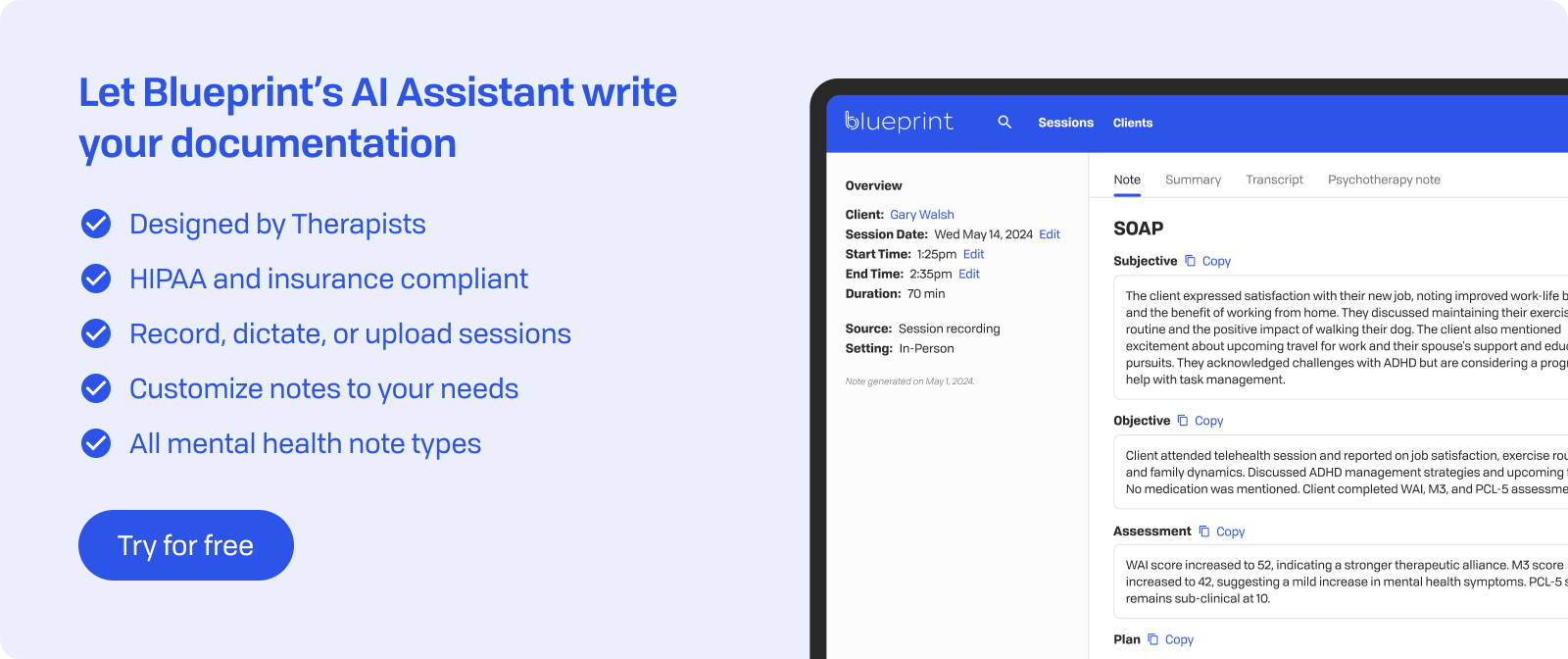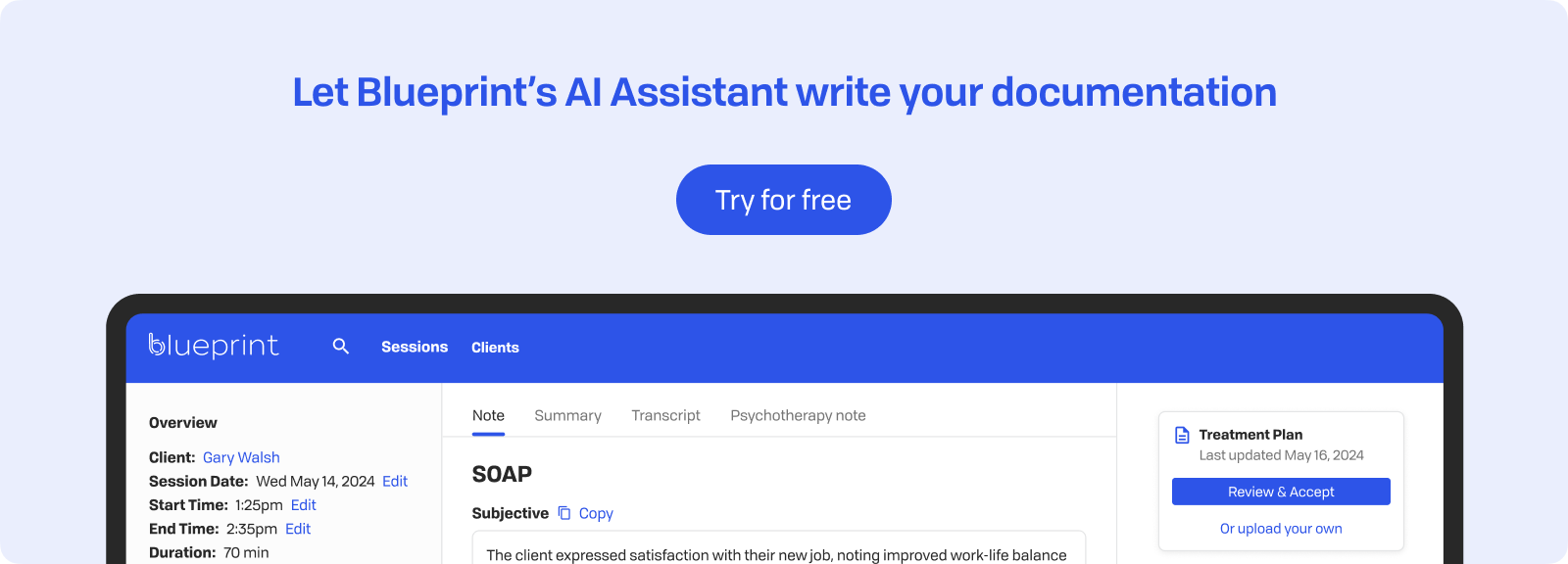In Brief
Your website acts as the digital front door to your practice. For many potential clients, it offers their first meaningful interaction with you as a therapist. This initial encounter influences their perception of your professionalism, approach, and whether you might suit their needs.
Every design choice you make—from color palette to navigation structure—communicates something about your therapeutic values. A cluttered layout might suggest disorganization, while thoughtful spacing and clear pathways reflect the clarity and calm you bring to sessions. These subtle cues carry more weight than you might think.
The aim is to create a web presence that authentically represents your practice while addressing the practical needs of those seeking support. Let's look at how strategic design decisions can boost your clinical credibility and help the right clients connect with you.
Understanding the Audience: Who Visits Your Site and What They Need
Your therapist website caters to three primary user groups, each with distinct needs and priorities.
Potential clients: This group may be new to therapy and looking on your site to seek clarity about your services and reassurance about taking this vulnerable step.
Caregivers and family members: Many people look for providers online to support loved ones. Often, these individuals are needing both practical details and evidence of your expertise.
Colleagues and referral sources: This group of people will examine your professional credentials and specializations on your site to determine if you're the right match for their clients.
Each group shares common priorities when visiting your site. They want immediate clarity about your services, specialties, and approach to treatment. Easy access to contact information and scheduling options reduces barriers to that all-important first connection. Most importantly, they seek reassurance about safety, confidentiality, and your professional credentials—elements that build trust before they ever meet you.
Design features directly impact how these visitors engage with your site and perceive your practice. Intuitive navigation helps anxious visitors find information without frustration, while clear headings and logical page organization reduce cognitive load. Accessibility features like readable fonts and sufficient contrast ensure all potential clients can access your information. Your language choices—whether formal or conversational, clinical or everyday—signal who you serve and how you work. Even small details like loading speed and mobile responsiveness show your attention to client needs and professional standards.

Core Structure & Important Pages
A well-organized therapist website usually includes five to six key pages that guide visitors from curiosity to making a connection. This basic setup helps ensure potential clients can find what they need easily and without frustration.
Suggested Page Structure:
- Home Page: Your digital welcome mat should clearly communicate who you help and how. Include a brief, friendly introduction, your main specialties, and a straightforward call-to-action for booking or contacting you.
- About Page: Share your professional story, including your reasons for becoming a therapist, your therapeutic approach, and relevant training. A professional headshot helps visitors see you as a person, not just credentials.
- Services Page: Clearly outline your offerings—individual therapy, couples counseling, group sessions, or specialized programs. Include details like session length, frequency options, and whether you offer virtual or in-person sessions.
- FAQs Page: Address common questions about fees, insurance, confidentiality, what to expect in the first session, and your cancellation policy. This helps reduce anxiety and cuts down on administrative emails.
- Contact/Booking Page: Make reaching you easy with multiple contact options, office location details, and ideally an integrated scheduling system. Include your availability windows and how quickly clients can expect a response.
- Resources Page (optional but useful): Share helpful articles, worksheets, or recommended readings that show your expertise and provide immediate value.
A logical site layout with minimal clicks between pages respects your visitors' time and emotional bandwidth. When someone seeking help can find your contact information within two clicks from any page, you make it easier for them to reach out for that initial connection.

Visual Design Principles That Support Your Therapeutic Brand
The visual elements of your website work together to create an atmosphere that reflects the therapeutic space you provide. Color psychology sets the tone—calming blues and greens naturally foster trust and renewal, while warm neutrals create a comfortable, welcoming environment. Consider using soft accent colors like teal or muted orange to highlight important elements such as contact buttons without overwhelming visitors.
Key design elements to consider:
- Strategic use of whitespace: Give your content room to breathe. Adequate spacing between elements reduces visual stress and helps visitors focus on your message.
- Consistent branding: Maintain the same fonts, colors, and styling throughout your site to create a cohesive, professional appearance that builds trust.
- Professional photography: A high-quality headshot on your About page helps potential clients connect with you as a person. Consider adding optional video content to further humanize your practice and showcase your communication style.
- Accessibility features: Ensure your site works seamlessly on mobile devices, as many clients search for therapists on their phones. Follow accessibility standards with readable font sizes (at least 16px), sufficient color contrast, and alt text for images.
- Balanced color palette: Combine calming primary colors with neutral whites or grays. Avoid bold, bright colors that might feel jarring to someone seeking support.
Your visual design should feel like an extension of your therapeutic approach—whether that's warm and nurturing, calm and structured, or energetic and solution-focused. The goal is creating a digital environment where potential clients feel safe enough to take the next step.

Messaging & Copywriting That Communicates Clarity and Empathy
Your website copy acts as your first interaction with potential clients. Writing warm, accessible content involves speaking directly to one person, not an audience. Use everyday language instead of clinical terms that clients actually understand. For instance, instead of "evidence-based modalities for anxiety disorders," say "proven ways to help you feel calmer and more in control."
Key copywriting elements for therapist websites:
- Share your therapeutic story: Craft your professional journey into a narrative that explains why you chose therapy as a career and what motivates your work. This personal touch helps clients see you as a real person who understands their struggles.
- Reflect your therapeutic voice: Your written tone should match how you speak in sessions. If you're naturally warm and conversational, let that come through. If you're more structured and direct, maintain that consistency.
- Address client emotions directly: Recognize the bravery it takes to seek help. Use phrases like "You might be feeling overwhelmed right now" or "Taking this first step can feel scary."
- Create clear pathways to connection: Every page should guide visitors toward contacting you with specific calls-to-action like "Schedule your free consultation" or "Send me a message today."
- Anticipate and answer concerns: Your FAQ section should cover practical worries (fees, insurance, scheduling) and emotional ones (confidentiality, what happens in the first session).
Keep in mind, potential clients often visit your site during vulnerable moments. Your words should offer the same safety and understanding they'll find in your practice.
Tools & Features to Facilitate Client Engagement
Modern therapy websites gain a lot from strategic tools that reduce administrative tasks while improving the client experience. These features show your commitment to accessibility and professional standards.
Key engagement tools include:
- Online booking systems: Allow clients to schedule appointments at any time, reducing phone tag and email delays. Look for systems that sync with your calendar, send automated reminders, and handle rescheduling easily.
- Secure contact forms: Provide a low-pressure way for hesitant clients to reach out. Include fields for preferred contact method and a brief description of their needs, but keep it simple to avoid overwhelming visitors.
- Client portals: Offer secure document sharing, intake form completion, and payment processing. This streamlines your workflow while giving clients control over their information.
Resource offerings that build trust:
- Educational content: Share articles about common mental health topics, coping strategies, or therapy myths. This positions you as a knowledgeable resource before the first session.
- Downloadable worksheets: Provide practical tools like breathing exercises or journaling prompts that offer immediate value and show your therapeutic approach.
- Psychoeducational materials: Include infographics or brief explanations about your treatment methods to help clients understand what to expect.
Professional credibility markers:
- Credentials display: Clearly list your licenses, certifications, and professional memberships on every page footer or in a dedicated section.
- Privacy statements: Include HIPAA compliance information and your confidentiality policies prominently.
- Ethics statements: Link to your professional code of ethics or create a brief statement about your ethical commitments to transparency and client welfare.

SEO, Maintenance & Performance Considerations
Getting found online involves strategic keyword placement throughout your site. Focus on combining your clinical specialty with your location—phrases like "trauma therapist in Denver" or "EMDR therapy Chicago" help local clients find you. Include these naturally in your page titles, headings, and content without forcing them. Your domain name can also support visibility when it includes relevant therapy terms or your location.
Important performance optimizations:
- Site speed: Keep load times under 2.5 seconds through image compression and reliable hosting. Slow sites frustrate visitors and hurt search rankings.
- Mobile responsiveness: Test your site regularly on different devices since many clients search on smartphones during difficult moments.
- Minimal animations: Avoid distracting movements or auto-playing elements that can overwhelm anxious visitors or those with sensory sensitivities.
Ongoing maintenance requirements:
- Content updates: Refresh your blog posts, update credentials, and revise service descriptions quarterly to show search engines your site remains active.
- Accessibility audits: Regularly check that screen readers work properly, forms remain accessible, and color contrast meets WCAG standards.
- Security monitoring: Maintain HTTPS encryption and update plugins/themes promptly to protect client information.
- Local SEO upkeep: Keep your Google My Business profile current with accurate hours, services, and contact information.
Regular maintenance isn't just about rankings—it’s a commitment to ensuring all potential clients can access your services when they need support most. Schedule monthly reviews to catch broken links, outdated information, or technical issues before they impact someone seeking help.
Key Takeaways
Thoughtful therapist website design goes beyond looks—it reflects the therapeutic values you practice. Just as you create a safe, welcoming space in your office, your website should convey clarity, warmth, and professional boundaries to help clients feel comfortable taking that first step.
Practical steps to build or refine your online presence:
- Start with structure: Plan your main pages (Home, About, Services, Contact) before focusing on design details
- Audit your current site: Check loading speed, mobile friendliness, and ensure visitors can book within three clicks
- Refresh your copy: Review your website text every few months to ensure it still aligns with your current approach and services
- Test accessibility: Use free tools to check color contrast, font readability, and screen reader compatibility
- Update regularly: Set monthly reminders to check for broken links, outdated information, and security updates
Creating your therapist website design mirrors the therapeutic relationship itself. Both require building trust through consistency, offering clear expectations, and creating an inviting space for connection. Your website becomes an extension of your therapeutic presence—available anytime to offer reassurance, information, and a path to support.
Consider how each design choice reflects your commitment to client care. The time spent on creating a thoughtful online presence shows the same dedication you bring to each session, indicating to potential clients their importance before they even reach out.

How Blueprint can help streamline your workflow
Blueprint is a HIPAA-compliant AI Assistant built with therapists, for the way therapists work. Trusted by over 50,000 clinicians, Blueprint automates progress notes, drafts smart treatment plans, and surfaces actionable insights before, during, and after every client session. That means saving about 5-10 hours each week — so you have more time to focus on what matters most to you.
Try your first five sessions of Blueprint for free. No credit card required, with a 60-day money-back guarantee.
























